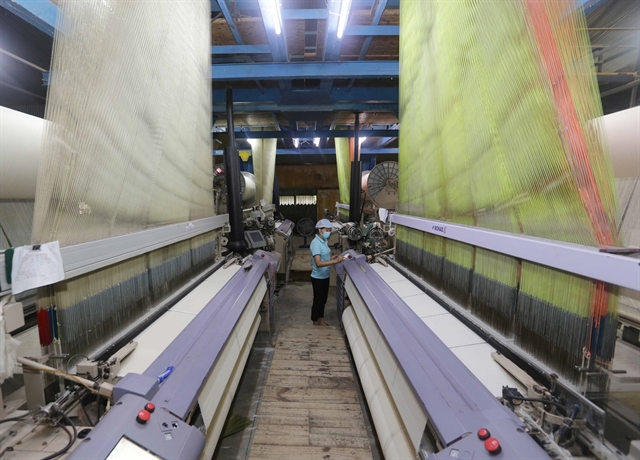 Economy
Economy


|
| The garment and textile export was estimated at US$40.3 billion this year, representing a decrease of 9.2 per cent against last year. — VNA/VNS Photo Trần Việt |
HÀ NỘI — Despite a drop in export revenue, made-in-Việt Nam textile and garment products reached 104 countries and territories this year, the highest number of export markets so far, Vũ Đức Giang, Chairman of Việt Nam Textile and Apparel Association (Vitas), said.
This demonstrates enterprises’ efforts to diversify markets amid declines in consumption demand in major markets as an impact of the global economic slowdown, Giang said at the conference of Vitas on Thursday.
Giang said that the garment and textile export was estimated at US$40.3 billion this year, representing a decrease of 9.2 per cent against last year.
The US remains the largest export market of made-in-Việt Nam textile and garment products with a revenue of $11 billion in January – September, Japan $3 billion, the Republic of Korea $2.4 billion, the EU $2.9 billion, Canada $850 million, China $830 million, and Cambodia $600 million.
The export expanded to markets such as Africa, Russia and India.
“The industry sees improvements in orders in the last quarter of this year as consumption is expected to increase ahead of Christmas and Solar New Year holidays,” Giang said.
He expected the recovery trend to continue in 2024 although uncertainty remains in the global economy.
The association set the goal for export revenue at $44 billion in 2024.
Giang also noted that the garment and textile industry still faced challenges from increasing requirements of import markets, including requirements about human rights, environmental protection, rules of origin, recycling and waste treatment.
Vietnamese producers are hastening the greening of production towards sustainable development, including investments in infrastructure to reduce emissions and technology to develop products with environmental friendliness and high durability, together with speeding up digitalization.
The industry still gets competitive advantage from free trade agreements (FTAs), Giang said, adding that Việt Nam is the only country which has FTAs with major economies including the US, Japan, China, EU, the UK and Russia.
The development strategy for the garment and footwear industry to 2030 which was approved recently will provide a firm ground to attract foreign investments in fibre, weaving and dyeing, encouraging the textile industry to take opportunities from FTAs, he said.
“It’s a good time for the garment and textile industry to take advantage of FTAs to expand international reach,” Giang said, urging enterprises to actively establish value chains and build brands.
In 2024, the industry would continue to focus on diversifying export markets and promoting sustainable development in line with requirements about greening, emissions reduction, labour and production transparency to enhance competitiveness, Giang said. — VNS